#House Zamoyski
Explore tagged Tumblr posts
Text
Stefcia the maid at Zamoyski House is back from helping her family with the harvest and has now been conscripted into smuggling her friend Heńka's beau past the gates on a Sunday night for an illicit tryst. I am once again saying more stately home museums should record TikTok costume dramas as promotional material, I have been following this Upstairs Downstairs-ass saga for months now
#Upton Downstairs Abbey: Po Polsku#I really enjoy this series but Zamoyski House social media is otherwise very funny#They do these dramatic reenactments of the nobility being dispossessed of their estates by Communists and stuff#Girl you're a state museum where do you think you came from
6 notes
·
View notes
Photo

Jadwiga Sapieżyna, née Zamoyska (1806–1890) was a Polish noblewoman and philanthropist.
9 notes
·
View notes
Text
Dungeon23 13jan23 hex 3,8 - the Zamość Synagogue

As promised, today we get to the (sizeable) Jewish population of Zamość. Sephardi Jews lived in Zamość from the city’s beginning, receiving permission to build a synagogue, mikvah, and cemetery within the city limits (something that, even in the religiously-tolerant Grand Duchy of Lithuania, could not be taken for granted). Jan Zamoyski, the founder of Zamość specially invited folks across the known world to live in the city, and the first Jewish residents were recruited from Venice and the Ottoman Empire. Ashkenazi Jews were not allowed residence in the city, which is a fascinating bit of history. Clearly a lot of politics going on here, and if I were a historian, there’d be plenty to plumb. But I’m not a historian, and our version of Zamość was built half a century after Nowa Polska lost contact with the rest of the world. That doesn’t mean we don’t have Sephardi Jews, however. It turns out that, roundabout when the Corruscation happens and our setting diverges from history, an Ottoman army had invaded the Grand Duchy of Lithuania. Thousands of Ottoman soldiers and attendants with no way of going home. And, of course, a notable minority of them would have been Sephardi. These are the Jews who first settled in Zamość. Let’s turn from history to the block. We have the aforementioned synagogue, of course, as well as the mikveh (ritual bath) and a kahal. Jews within the Grand Duchy (and Nowa Polska, therefore) had the right of self-government and autonomous organizing. The kahal was both administrative building and legislative body of the Jewish people, for the Jewish people. All urban Jewish communities had a kahal which functioned as a secular center of Jewish life to complement the synagogue. Furthermore, we also have a few tenements for the wealthier Jews. Zamość also has a small Muslim population - the Grenadan artificers, as well as other remnants of that Ottoman army. As they are not numerous enough to warrant a permanent mosque, the synagogue doubles as a mosque on Friday afternoons and as needed for the other Islamic holy days. Where the rest of the city primarily speaks Polish, Yiddish and Arabic are the lingua franca of the synagogue and its environs. The synagogue block presents many opportunities for Jewish player characters - consulting with the rabbi, finding a minyan, studying Torah with the elders and wealthy (although there is no yeshiva in Zamość), even temporary housing. Muslim player characters have a dedicated place to worship, may seek the imam’s counsel, and get a lead on where the other Muslims in town live. Christian player characters (of all denominations) will find little for them in the synagogue block. Centuries of pogroms do not vanish after a few years of nominal religious tolerance.
#dungeon23#city23#gelgelim#nowa polska#zamość blocks#city blocks#blocks#ttrpg#ttrpg design#indie ttrpg
7 notes
·
View notes
Photo

Zamoyski Palace, Kozłówka, Lubartów County, Lublin Voivodeship, Poland
#art#design#Architecture#Palace#zamoyski palace#neo classical#kozlowka#poland#luxury homes#luxury house#luxury lifestyle#lubartow county#lublin voivodeship#gardens#landscape#history
106 notes
·
View notes
Text

Countess Zofia Zamoyska, nee Potocka
0 notes
Text
EDEN CONFIDENTIAL:
The Queen is always keen to promote high-flying women. And I hear she’s appointed one of the Royal Air Force’s most decorated women, Elaine West, to be her new Lady Usher of the Black Rod at the House of Lords.
West, 60, was a history-maker in the RAF, becoming the first woman to reach the rank of Air Vice-Marshal.
Her new role will see her controlling access to and maintaining order within the Lords and its precincts.
source: https://www.dailymail.co.uk/tvshowbiz/article-10050863/EDEN-CONFIDENTIAL-Nightmare-Prince-Charles-friend-Count-Adam-Zamoyski-house-arrest.html
10 notes
·
View notes
Text
MICHAŁ KORYBUT WIŚNIOWIECKI
Monarch of the Polish-Lithuanian Commonwealth
(born 1640 - died 1673)

pictured above is a portrait of the Monarch of the Polish-Lithuanian Commonwealth, from the 18th century
-------------------- ~ -------------------- ~ --------------------
SERIES - On this day November Edition: Michał died on 10 November 1673.
-------------------- ~ -------------------- ~ --------------------
MICHAŁ TOMASZ was born in 1640, probably at the village of Bilyi Kamin in the Belz Voivodeship of Poland.
He was the only child of Jeremi Wiśniowiecki, Prince of Vyshnivets, Lubny and Khorol and Gryzelda Konstancja Zamoyska, and thus he was a member of the wealthy HOUSE OF WIŚNIOWIECKI.
His father lost the majority of the family lands to Russians and Cossacks, before his own death in 1651. So after his father's death he lived for a couple of years with Karol Ferdynand Vasa, Bishop of Plock, a brother of Jan II Kazimierz, Monarch of the Polish-Lithuanian Commonwealth.
When the Bishop died, his uncle Jan Zamoyski took him under his guard and on his teenage years he lived in the Polish Court of King Jan II.
During his time at Court, the King and his wife Princess Maria Luisa (Gonzaga) of Mantua supported his education and later sent him to attend university in Prague.
After King Jan II abdicated in 1668, his name was suggested, among others, as a candidate to the Polish-Lithuanian throne.
And a couple of months later, in 1669, with the support of the majority of the nobility he was elected as MICHAŁ I, MONARCH OF THE POLISH LITHUANIAN COMMONWEALTH. He reigned as MICHAŁ I, KING OF POLAND and as MYKOLAS I, GRAND DUKE OF LITHUANIA.
It was probably at that time that he started to style himself as MICHAŁ KORYBUT, incorporating the name of the coat of arms of the House of Wiśniowiecki to his name.
In 1670 he married ELEONORE MARIA JOSEFA, an Archduchess of Austria, but they did not have any children. She was one of the youngster daughters of Ferdinand III, Holy Roman Emperor and his third wife Princess Eleonora (Gonzaga) of Mantua.
By the end of 1673 his health started to decrease and he handed over the command of the Army to Jan Sobieski.
On 10 November 1673, the Monarch of the Polish-Lithuanian Commonwealth died, aged only 33, in Lviv (now part of Ukraine).
-------------------- ~ -------------------- ~ --------------------
His short reign was not easy as he had to endure a war against the Ottoman Empire and at home he had to contain the nobility, divided between Royalist supporters and the pro-French (who wanted a French Monarch).
Jan Sobieski, who had won some battles against the Ottomans, was elected the next Monarch of the Polish-Lithuanian Commonwealth as Jan III, King of Poland and Jonas III, Grand Duke of Lithuania.
#michal korybut wisniowiecki#michal wisniowiecki#king michal i#king michael i#king of poland#house of wisniowiecki#wisniowiecki#polish nobility#polish royalty#polish royals#royals#royalty#monarchies#monarchy#royal history#polish history#european history#world history#history#history lover#holy roman emperor#ferdinand iii#ottoman empire#polish lithuania#17th century#history with laura
2 notes
·
View notes
Text
Napoleon’s Coup d’etat; A Hot Mess
The following are excerpts from Napoleon, A Life by Adam Zamoyski. Napoleon’s heroic coup d’etat was in actuality a hot mess with comedy thrown in.
“Bonaparte took over one of the palace’s drawing rooms as his headquarters. Talleyrand had rented a house nearby in which he, Roederer, and others waited, ready to climb into a waiting carriage if things went wrong. Sieyes too had taken the precaution of parking his carriage in a discreet place nearby in case he had to make a quick getaway. It was said that some of the conspirators were carrying large sums in ready money for the same reason. Bonaparte himself seems to have had an attack of nerves shortly after his arrival and flew into a rage with an officer for no reason.
There was good reason to be nervous. As they waited for the chambers to be made ready, the deputies of the two assemblies, most of whom had been excluded from the previous day’s session, strolled about discussing the situation, joined by Parisians who had driven out to see what was going on. In the course of these discussions those hostile to any change grew firmer in their resistance, while supporters of the coup began to have second thoughts. Bonaparte had a total of about 6000 troops at hand, some sitting around their stacked weapons in the courtyard giving evil looks to the deputies, those hated ‘lawyers’ and ‘chatterboxes’, others deployed in the grounds and the surrounding streets.”
(Napoleon, A Life, Adam Zamoyski, pages 234-235)
“It was not until well after one o’clock that the Five Hundred were able to take their seats, in a flapping of scarlet Roman togas and plumed Polish caps. Lucien and his supporters were to persuade their assembly to nominate a commission to investigate the dangers threatening the Republic. But things got off to a bad start. Sensing what was afoot, the Jacobins among them began denouncing the incipient dictatorship, declaring that they would defend the constitution to the death. It was the kind of emotive language that swayed the majority in assemblies of the period, and a vot was carried to have every deputy renew their oath to it. That would take all day.
The Elders had already filed into the Gallery of Apollo in their blue togas, preceded by a band playing the Marseillaise. They were to take notice of the resignation of the three Directors, declare the government thereby dissolved, and appoint three consuls to prepare a new constitution. But the session had hardly opened when some of the deputies began questioning the legality of the previous day’s proceedings. One of the conspirators cleverly observed that the Elders could not debate anything until the Five Hundred had properly constituted themselves--which they had not, as they were still busy renewing their oaths.”
(Napoleon, A Life, Adam Zamoyski, page 235)
“In the damp room, hardly warmed by a smoking fire, where Bonaparte, his brother Joseph, Sieyes, and the other leaders sat, ‘people looked at each other but did not speak’, according to one of those present. ‘It was if they did not dare to ask and feared to reply.’ People began making excuses and slipping away. Bonaparte tried to hide his nerves by giving unnecessary orders and moving troops about. Every so often Lavalette would come and report on what was going on in the chambers.
Outside, more and more people began to drift in from Paris. Jourdan and Augereau had also turned up, alert to the possibility of exploiting the situation for themselves....Just before four o’clock he (Bonaparte) announced that he wished to speak to the Elders and, followed bu a number of aides, entered their chamber. Their session had by then been suspended, but they gathered to hear what he had to say.
Bonaparte was not a good speaker, often having difficulty in finding the right words. He was flustered and did not have a specific case to put, only a series of slogans which had proved sufficient up until now. ‘Allow me to speak to you with the frankness of a soldier,’ he began. He had, he told them, been minding his own business in Paris when they had called on him to defend the Republic. He had flown to their aid, and now he was being denounced as a Caesar and a Cromwell, a dictator. He urged them to act quickly, as there was no government and liberty was in peril. He was there to carry out their will. ‘Let us save liberty, let us save equality!’ he pleaded. At that point he was interrupted by the shout, ‘And what about the constitution?’. After a stunned silence, Bonaparte pointed out that they themselves and the Directory they had named had violated the constitution on at least three occasions, which was not tactful, and did not lend conviction to his main theme, to which he returned, plaintively assuring them that he was only there to uphold their authority and did not nourish any personal ambitions, and exhorting them to emulate Brutus should he ever betray their trust. His friends tried to restrain him, but many of the member of the assembly had been angered, and not began asking awkward questions. He carried on, growing more and more aggressive in tone and grasping at any words and phrases that came to mind, conjuring up visions of ‘volcanoes’, of ‘silent conspiracies’, and at one point defiantly warning them: ‘Remember that I march accompanied by the god of victory and the god of war!’ He ranted on incoherently until Bourrienne dragged him away by his coat-tails.”
(Napoleon, A Life, Adam Zamoyski, pages 236-237)
“Hardly had he entered the orangery than shouts of ‘Down with the tyrant!’, ‘Down with the dictator!’, and ‘Outlaw!’ greeted him as the assembly rose to its feet in outrage at this military incursion. He was instantly assaulted by a multitude of deputies pressing in on him, shouting, shaking him by his lapels and pushing so hard that he momentarily lost consciousness. He was rescued by Murat, Lefebvre, and others, who kept the enraged deputies back with their fists, and by the grenadiers he had brought with him. The scuffle grew fierce, and a number of the members of the public in the spectators’ gallery fled through the windows. Bonaparte was eventually carried out, pale, struggling for breath, his head lolling to one side, barely conscious, pursued by cries of ‘Outlaw! Outlaw!’, which in the course of the Revolution had come to signify a condemnation to death.”
(Napoleon, A Life, Adam Zamoyski, page 237)
“Bonaparte had returned to his centre of operations. He seemed completely undone, making strange statements and at one point addressing Sieyes as ‘General’. He soon recovered himself, but for the rest of the day his words and actions remained disjointed and not entirely coherent.”
(Napoleon, A Life, Adam Zamoyski, page 238)
“Bonaparte came out of the palace followed by his suite and asked for his horse. The fiery beast lent by Bruix had been frightened by the shouting, with the result that when he mounted it began rearing and bucking. After some less than heroic tussles with it, he rode up to the bewildered grenadiers of the legislative guard, who failed to show much interest.....Riding up and down on his unruly mount he stuck a heroic pose, venting his fury at the way he had been treated by the Five Hundred, telling the troops that he had gone to them offering to save the Republic but had been attacked by these traitors, paid agents of Britain, who had brandished daggers and tried to murder him. His agitation had brought out a severe rash on his face, and while considering his next move he had scratched so hard that he had drawn blood, which now seemed to confirm the story of daggers raised against him--the rumor that he had been wounded flew through the ranks...”
(Napoleon, A Life, Adam Zamoyski, page 238)
#napoleon#bonaparte#Napoleon Bonaparte#Emperor Napoleon#Emperor Napoleon I#Emperor Napoleon Ier#Napoleon's coup d'etat#coup d'etat#Adam Zamoyski#Napoleon A Life#excerpt#book excerpt#this needs to be turned into a movie#omg#wtf#this is real life
55 notes
·
View notes
Photo

“Writing a personal letter to the Kimh was a breach of protocol, and the response, from the foreign secretary Lord Grenville, was haughty. Addressed to his counterpart Talleyrand rather than to Napoleon Bonaparte, [the letter] accused France of ten years of aggression and clear that since Britain did not recognize the present authorities in France as legitimate, it would only negotiate with the restored Bourbons. Napoleon Bonaparte’s response, delivered by Tallyrand, rejected the charge of the aggression and challenged Grenville’s attitude to the French government, given that every other state in Europe had recognized the Republic and Britain itself had conducted negotiations with it only two years before. ‘Every nation had the right to choose its rulers,’ he went on, pointing out that the House of Hanover itself reigned in Britain thanks to a revolution. The point was picked up in the House of Commons by member of the opposition who asked Prime Minister William Pitt what he would say if a victorious France were to declare that she would only negotiate with the Stuarts.” - Adam Zamoyski, chapter twenty one, Marengo, page 276 of “Napoleon: A Life” (at San Francisco, California) https://www.instagram.com/p/CU5rnlPBGoi/?utm_medium=tumblr
0 notes
Note
What do you believe Tadeusz Kościuszko's sexuality was?
With historical figures we will never know. However, Tadeusz Kosciuszko was evidently very attracted to women. He was known as a notorious flirt and apparently liked to go out of his way to flirt with women such as lavishing them in flattery. In a letter to Mrs. Gates he wrote:
“I suppose that you and I both enjoy the same advantages of good society: I should like to see you, Madam, during the journey taking out biscuits from your portable magazine where they are so neatly stored, and distributing them among your Family and saying: my son, Here this is for you; Come [Robert] Troup, take this biscuit, it is very good; and then I should lie to see General Gates how he takes one and says, indeed they are good for nothing. O! Madam how I should laugh.”
In his appeal to women, he wrote:
“O’ beautiful gender, the fairer sex! I honestly suffer at the site of your restless anxiety about the fate of our brave endeavor, which Poles are undertaking to free their fatherland. Your tears caused by your caring hearts, my fellow female citizens, are overwhelming for your countryman who is joyously devoting himself to a fight for the happiness of the nation.”
One evening, he joined fellow graduates and students of the Knight’ School he had attended, who were invited to a formal ball in honor of the king given by Count Zamoyski. It was there that Kosciuszko met Louise Sonosnowska. Her father hire Kosciuszko finically by hiring him as a tutor for his daughters Catherine and Louise. Louise and Kosciuszko formed a emotional and intellectual bond. He wished to ask her father for her hand but regarding his social standing and economical affairs, he realized that he did not make a good suitor.
Kosciuszko rode to Czartoryski and detailed his politics of whom he wanted to marry and, after suggestion, took it up with King Stanislaw who advised him to dismiss his romantic notions for her. Kosciuszko left and consoled himself with his friends from the military academy. There he found reassurance he had been wishing to hear and plotting an elopement with Louise. However, Kosciuszko’s intentions made word back up to the King and warned Louise’s father of his plan. He married her off and Kosciuszko was forced to flee to not face prosecution for what he desired.
Telka Zurowska was an eighteen-year-old nobleman’s daughter. The Zurowskas were staying in the house next to Kosciuszko’s quarters. Kosciuszko and Tekla exchanged flirtatious letters and began playfully teasing each other. They soon were seen kissing. Their feelings were mutual. On one occasion Kosciuszko wrote to Zurowska:
“How did you sleep? and what did you dream about? . . . I kiss your hands, and your mother’s feet. I’ll have to content myself with this.”
Another time he wrote:
“Tekla, when you write, send me one of the pearls that is hanging around your neck. Let providence and a coat of complete happiness wrap themselves around you, and you may be convinced of my stable, amiable respect and conviction.”
Tekla’s mother approved of Kosciuszko but her father was not pleased about the romance. In a moving moment, Tekla cried at her father’s feet proclaiming her devotion to him. When Kosciuszko heard about this, he wrote to her:
“I also give you my sprinkled tears . . . I embrace your heart wth you own heart. I tremble not from the cold, but from internal uneasiness . . . open your breast so that I can kiss your heart. Hold our your lips, delicately, and do not be offended by my affectionate kisses . . . I kiss you one more time. I take my leave, because in my conscious thoughts I am always beside you.”
Kosciuszko tried to impress her by trying to move his way up the feudal chain and my applying to leasehold some farmland to prove for the nobleman’s daughter. Eventually, after nothing worked, he wrote a letter to him, asking for his daughter’s hand. Kosciuszko said he would not do anything against his wishes but still he did not believe him and he left the village with his family.
Kosciuszko was not rather lucky in his romantic inclinations evidently. He would never marry.
98 notes
·
View notes
Text
We Suggest: "Napoleon: The Man Behind the Myth" at the Boswell Book Festival
Adam Zamoyski is an acclaimed historian of European history with a singular command of languages. He has written a best selling history of Poland, as well as books of military history and biography. We recommend you attend his presentation of Napoleon: The Man behind the Myth (William Collins, 2018) at the Boswell Book Festival, which sheds new light on one of France's most influential and infamous military and political figures.
Hailed as an "out and out masterpiece", Adam Zamoyski's biography, Napoleon, is the first written in English to rely on original European sources. His unadorned portrait, stripped of historical myth and propaganda, reveals Napoleon the man – as a brilliant young artillery officer, as a Corsican patriot, as a reader of great works (including those of James Boswell, whose name the book festival bears), and as a victorious general and burgeoning autocrat. But it also shows him as a healer of a divided French nation, a modernising statesman, an admirer of the arts and sciences, as well as lover and loving husband – and ultimately as the creator of his own catastrophic downfall.
Event details
Napoleon: The Man Behind the Myth Adam Zamoyski at the Boswell Book Festival Saturday, 11 May 2019 | 6.30 pm In ENGLISH | £9 (£7 concession, £5 IFE Member) Booking Information Below Zamoyski will be delighted to sign copies of his book immediately after the event
The Boswell Book Festival Dumfries House Cumnock Ayrshire KA18 2NJ
About the Boswell Book Festival (10-12 May 2019) The Boswell Book Festival is the world's only festival of biography and memoir, named after the great Scottish Enlightenment writer James Boswell. Held at the historic Dumfries House, it is "a great example of an event that mixes Scottish history and tradition, with contemporary culture and an iconic setting to create something really special for visitors" (Event Scotland).
For full festival and event details, see the programme and flyer attached below.
Booking Information Tickets can be purchased:
Phone: 0333 0035 077
Online: www.boswellbookfestival.co.uk
In Person: Waterstones, High Street, Ayr
Special Offer for Institut Members Use the code FRENCH when purchasing non-concession tickets to reduce price to £5 each! If you are interested in discovering all the benefits of becoming a member of the Institut, visit our website.
Image: Napoleon Crossing the Alps, Jacques-Louis David (1801)
Boswell Book Festival 2019 Programme
Napoleon Event Flyer
from Institut Français Écosse http://www.ifecosse.org.uk/We-Suggest-Napoleon-The-Man-Behind.html via IFTTT
0 notes
Text
New Post has been published on The Maier Files
New Post has been published on https://the.maier-files.com/the-omnipresent-retinger/
The omnipresent Retinger
Dr. Joseph Hieronim Retinger is perhaps one of the most mysterious figures of the twentieth century. It is he who is credited with being the father of Bilderberg. He is also credited with being the motivating force behind the European League for Economic Cooperation, the European Movement, and the Council of Europe. A compulsive intriguer and behind-the-scenes political wheeler-dealer, Retinger became known in his circles as a “grey eminence”. At different times he was rumoured to have been an agent for the Socialist Internationale, the Freemasons, the Vatican, and the government of Mexico. Others saw him as an irresponsible meddler and a penniless adventurer. Even his friends, people like former Italian diplomat Pietro Quaroni, ask, “Did we really know him?” Denis de Rougemont, head of the European Cultural Center (which Retinger founded), worked with Retinger for over thirteen years, yet he too asks, “How well did I really know him?” But on one point they all agree: Retinger was one of the best informed people in the world.
[vc_row][vc_column width=’3/4′]
Retinger was born in Kraków, Poland (then part of Austria-Hungary), the youngest of four children. His father, Józef Stanisław Retinger, was the personal legal counsel and adviser to Count Władysław Zamoyski. When Retinger’s father died, Count Zamoyski took Józef into his household. Financed by Count Zamoyski, Retinger entered the Sorbonne in 1906, and two years later became the youngest person to earn a Ph.D. there at age twenty. He moved to England in 1911.
A Polish patriot at heart, Retinger struggled to make connections and penetrate inner government rings as political agent and head of the Polish Bureau in London. Retinger obtained a reputation for being both cheeky and crude. He rapidly made numerous enemies. During the years of World War I Retinger shuffled backwards and forwards between London and Paris. On one spring morning in 1918 while in Paris, Retinger was summoned by M. Jules Pams, the French Interior Minister. Due to certain unspecific intrigue typical of Retinger, he was ordered to leave the Allied nations or deal with an official expulsion. Angered, Retinger departed that very afternoon on a 4 pm train to Spain.
He spent the next nine months in virtual poverty, mostly in Barcelona. Then he one way or another he was able to obtain passage on a cargo boat destined for Havana Cuba. He rapidly got bored with Havana and moved on to Mexico where he once more engaged himself in the local political intrigue of the day. He helped build up a secret society consisted of young Mexican patriots, called the “Action Committee”. It was Retinger who later on advised the Mexican Government to nationalise American-owned petroleum wells and who helped expose an American oilmen conspiracy to provoke a war between the United States and Mexico. Next the ever-adventurous Retinger smuggled himself across the Rio Grande and into Texas. He boarded a train to Washington, D.C. and looked up Felix Frankfurter, obviously a good old acquaintance, upon his arrival. In the early 1920s, Retinger carried out various secret missions for President Obregon. In 1924 he established the first congress of Latin American trade unions. In Retinger’s memoirs there is addititionally proof of a secret mission to the Vatican to fix up relations between Mexico and the Church. It was in 1924 that the concept of European unity first occured to Dr. Retinger. With British Member of Parliament E. D. Morel, he attempted to establish a clandestine organisation with the purpose of promoting European unity.
With World War II coming on strong, Retinger in 1939 joined forces with General Sikorski and the Polish Government in Exile in London. He became Sikorski’s most trusted political advisor. In July 1943, Sikorski died tragically in a plane crash. Retinger teamed up with General Sir Colin Gubbins, head of the super-secret S.O.E. Retinger, although 56 years of age, was parachuted into German-occupied Poland. The goal of the mission was to persuade the Polish underground forces and political leadership to accept that it was imperative to start negotiating with the Soviets, as they were now to be considered Poland’s allies and had the full support of the British and Americans.
At the end of the war, Retinger, with greater passion resumed his campaign for a unified Europe. On May 8, 1946 he addressed the Royal Institute for International Affairs and from this speech grew the idea of a European Movement. Working closely with Paul Van Zeeland, the Belgian Minister for Foreign Affairs, and Paul Rijkens of Unilever, Retinger organised the First Congress of Europe at The Hague in 1948. From it sprang the Council of Europe and various national committees of the European Movement. In July 1948 Retinger made a trip to the United States with former Belgian Prime Minister Paul Henri Spaak, Winston Churchill, and Duncan Sandys, President of the European Movement, to seek funds for the non-governmental, political activities of the European Movement. As a result of this initiative, an organisation called the American Committee on a United Europe was formed. The A.C.U.E. was officially launched during a luncheon in honour of Winston Churchill on March 29th, 1949. Most significant about A.C.U.E. was its leadership: Its Chairman was William Donovan, former Director of the Office of Strategic Services (the wartime intelligence agency of the United States). Its Vice-Chairman was Allen Dulles, Director of the newly-formed Central Intelligence Agency. Its Secretary was George Franklin, then Director of the Council on Foreign Relations (and now “Coodinator” of the Trilateral Commission, examined in Part Two of this book). Its Executive Director was Thomas Braden, head of the CIA’s division on international organisations. Shortly after its inception, A.C.U.E. began to send money to the Brussels headquarters of the European Movement, of which Retinger was now Secretary General. According to John Pomian, Retinger’s personal assistant from 1948 until Retinger’s death in 1960. “Retinger always believed that public opinion follows the lead of certain individuals.” Perhaps in this spirit, Retinger, in 1952, went back to Paul Van Zeeland and Paul Rijkens, his European Movement associates, with the suggestion of organising unofficial meetings of important people from NATO countries. The purpose he visualised for such a forum was 1) to help promote the case for European unity and 2) to form an Atlantic alliance. Rijkens liked the idea and he arranged for Retinger to meet Prince Bernhard of the Netherlands. Bernhard, it was felt, would be the ideal figurehead for such a forum because of his royalty and ‘apolitical’ standing. Together, Prince Bernhard and Dr. Retinger journeyed to Washington, D.C. and lobbied the support of General Walter Bedell Smith, Director of the CIA, and Charles Jackson, a national security assistant to President Eisenhower. An American committee was formed. Its original members included John Coleman, Chairman of the Burroughs Corporation, David Rockefeller of Chase Manhattan Bank, Dean Rusk, head of the Rockefeller Foundation, Henry Heinz II, of 57 varieties fame, Joseph Johnson, President of the Carnegie Endowment for International Peace, and George Ball. The first formal conference was arranged for May 29-31 at Hotel de Bilderberg in the small Dutch town of Oosterbeek, courtesy of the Dutch Government and the American CIA. … The Bilderberg-group was born. …
A good read on the subject:
https://amzn.to/2T8RuzF
[/vc_column][vc_column width=’1/4′]


[/vc_column][/vc_row]

Martin Bormann
He plays a small role in the story about the disappearance of Otto Maier and Maier files, Martin Bormann. In May 1941 Martin Bormann was made Party Chancellor of the National Socialist Party, a position he utilized to become the Third Reich’s principal bureaucrat. He was also Hitler’s right-hand man, his personal secretary and his bookkeeper, and stood with the......
2 Likes
Share

Unternehmen Patentenraub 1945
Plenty of present-day authors have demonstrated that the German science and technology in the 1930’s and 1940’s extended far beyond the flash and bang of atomic weapons, flying discs, rail guns and other fascinating technological innovations. It extended into the everyday life of the post-war world. Thousands and thousands of patents were taken away by the Allies from German vaults......
3 Likes
Share

THE HOUSE OF MORGAN
“The House of Morgan” is about the rise, fall, and resurrection of an American banking empire—the House of Morgan. Perhaps no other institution has been so encrusted with legend, so ripe with mystery, or exposed to such bitter polemics. Until 1989, J. P. Morgan and Company solemnly presided over American finance from the “Corner” of Broad and Wall. Flanked by......
0 Likes
Share
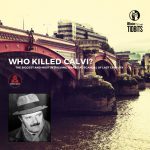
Who Killed Calvi?
On 18 June 1982 the body of Roberto Calvi was found swinging on a length of orange nylon rope beneath Blackfriars Bridge, London. He had £10,000 worth of sterling, Italian lire and Swiss francs in his wallet and his trousers were stuffed with bricks and stones from a nearby building site. The British coroner recorded a case of suicide. [vc_row][vc_column......
0 Likes
Share
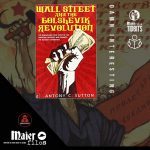
International bankers and the Bolshevik revolution
Since the early 1920s, numerous pamphlets and articles, even a few books, have sought to forge a link between “international bankers” and “Bolshevik revolutionaries.” Rarely have these attempts been supported by hard evidence, and never have such attempts been argued within the framework of a scientific methodology. Indeed, some of the “evidence” used in these efforts has been fraudulent, some......
2 Likes
Share

Playing for high Stakes
Herbert Osborn Yardley (April 13, 1889 – August 7, 1958) was an American cryptologist. He founded and led the cryptographic organization the Black Chamber. Under Yardley, the cryptanalysts of The American Black Chamber broke Japanese diplomatic codes and were able to furnish American negotiators with significant information during the Washington Naval Conference of 1921-1922. Recipient of the Distinguished Service Medal.......
0 Likes
Share
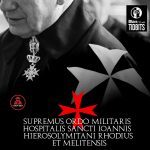
The Knight Templars & the Knights of Malta
The secret about the Templars would not be if it had not been made to be by circles and powers who had and have an understandable interest – from their point of view – to keep the truth in obscurity. Originally known as the Knights Hospitaller, the Sovereign Military Hospitaller Order of Saint John of Jerusalem of Rhodes and of......
0 Likes
Share

The biggest known bank fraud in the world
The Bank of Credit and Commerce International (BCCI) was a useful tool for many powerful clients, ranging from the CIA and the Medellín cartel to Osama bin Laden, al-Qaeda, and influential figures in both the Republican and Democratic parties of the USA. When BCCI was finally shut down, as much as $15 billion had been lost or stolen—the biggest bank......
0 Likes
Share
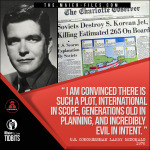
Do I mean Conspiracy? Yes I Do.
In the list of Conspiracies the case of Lawrence Patton “Larry” McDonald fits perfectly. Is it a conspiracy theory as many tried to ridicule his claims or is it indeed, a fact? In any case the coincidences are weird! Lawrence Patton “Larry” McDonald (April 1, 1935 – September 1, 1983) was an American politician and a member of the United......
4 Likes
Share
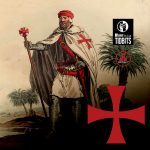
Secret Societies of the Middle Ages
The 3 most eye-catching secret societies are the muslim Assassins, the Templars and the Secret Tribunals of Westphalia. Thomas Keightley (1789-1872) was an extraordinarily prolific Irish-born, known for his works on mythology and folklore scholar. He could read twenty different languages. He attended Trinity College in Dublin, but because of ill health, he did not join the Irish bar. He......
1 Like
Share
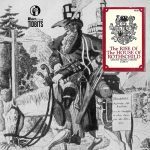
The Rise of the House of Rothschild
Historians, in interpreting the nineteenth century, have laid stress on many and various aspects of the period under study; and descriptions of isolated periods, single episodes, and individuals are scattered amongst hundreds and even thousands of books. On the other hand, certain special features of the period under consideration have been, for various reasons, entirely neglected. An example of such......
0 Likes
Share
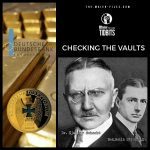
Checking the Vaults
A large portion of Germany’s massive gold reserves are stored abroad, mainly in the Federal Reserve in New York. But are the bars really where they are supposed to be? A dispute has broken out over whether the central bank needs to check on its gold, or if Germany can trust its international partners. Gold has been natural money for......
1 Like
Share
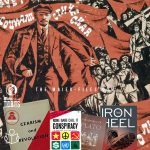
The Ruling Elite’s Creation of Socialism
Nineteenth century British Prime Minister Benjamin Disraeli commented that the world is governed by very different people from what is imagined by those who are not behind the scenes. Dr. Carroll Quigley who taught at Harvard and Princeton and at the Foreign Service School of Georgetown University wrote about this network of “insiders” who govern from behind the scenes in......
0 Likes
Share
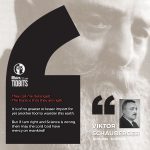
They call me deranged. The hope is that they are right.
Throughout recorded history humanity has been periodically uplifted by the contributions of a few gifted and enlightened individuals, whose teachings and philosophy have gradually raised the level of human awareness. Lesser mortals have also played a vital role in this process and the seeding of human consciousness with higher truths always seems to come at a time when humankind as......
3 Likes
Share

The Myth of a Guilty Nation
Albert Jay Nock wrote one of the first American books of WWI Revisionism, revising the received story of why WWI began. Originally published in 1922 by B. W. Huebsch, Inc. The Myth of a Guilty Nation was Albert Jay Nock’s first great antiwar book, a cause he backed his entire life. The book came out in 1922 and has been......
0 Likes
Share
0 notes
Photo

The Zamojskie Museum, Zamosc, Poland, is located in three Armenian Tenement Houses in the Rynek and consists of archaeological, ethnographic and historical departments. The historical department is devoted to the history of Zamość, the Zamoyski family and Zamość Entail.To learn more about our visit to Zamosc, check out our latest BESPOKE travel blog post at https://www.tailormadeitineraries.com/single-post/2017/09/05/10-Things-to-See-and-Do-in-Zamość ________________________________________ #wegotopoland #zamosc #naszapolska #polandbeautiful #polskajestpienka #beautifulpoland #ilovepoland #polandsights #loves_polska #igerspoland #architecturegram #architectureporn #architecturelovers #archidaily #medievalarchitecture #architexture #archilovers #buildingporn #architecturephotography #oldarc #instapassport #worldtravelpics #worldtravelbook #letsgoeverywhere #traveldeeper #travelawesome #traveladdict #seetheworld #traveltheworld #travellife (at Zamość Stare Miasto)
#seetheworld#igerspoland#travellife#worldtravelpics#architectureporn#ilovepoland#loves_polska#architecturelovers#medievalarchitecture#buildingporn#architecturegram#architexture#naszapolska#instapassport#beautifulpoland#wegotopoland#architecturephotography#oldarc#polandbeautiful#letsgoeverywhere#traveladdict#polandsights#zamosc#worldtravelbook#travelawesome#traveltheworld#archidaily#archilovers#polskajestpienka#traveldeeper
0 notes
Text
Dungeon23 10jan23 hex 3,6 - Zamoyski Academy
Today’s block is another city landmark: the Zamoyski Academy, named after the Zamoyski family who founded the city and continue to rule it.

As mentioned previously, the Academy is one of three universities in all of Nowa Polska. Unlike a contemporary university, the Zamoyski Academy also offers secondary education to the children of szlachta and wealthy burghers. It is an expressly Catholic institution, with the Bishop of Chełm serving as honorary chancellor, but due to the religious tolerance decrees, all are welcome to attend the university if they can cover its fees. Player characters in need of experts, libraries, or rebellious youth would likely find them at the Academy. While becoming students would preclude adventuring, the Academy’s amenities are somewhat available to the public. The Academy’s faculty are simple to access: players can book appointments with the professor’s assistant (with the next available appointment anywhere from a week to a month away, scheduling that can be finessed with the right combination of social capital and charm) and reserve a small block of their time. Its library is exclusive, but one need only charm or bribe the senior librarian on-duty to get casual access. Finding anything (this is rather a while before Melvil Dewey, and thus each library has its own opaque organizational structure) is another question, but academically-minded characters with enough charm could learn enough of it to be navigable given a month or two of work. A letter of recommendation or friendship with library staff would greatly expedite the process. The student body is perhaps the most useful of all the Academy’s resources, but player characters would have a hard time ingratiating themselves with the students here at the Academy. Student housing and (most importantly) the eating and drinking establishments they frequent are in another block (one we haven’t yet covered), and player characters should seek them out there.
2 notes
·
View notes
Text
Dungeon23 5jan23 hex 7,7 - Tenements

Very little to say here. The block in 7,7 shares all the same proximities as those in 7,6. It's near the Ratusz and Great Market, which invites folks to live there but precludes noisy industry. The Water Market does lie directly to the south (hex 6,8), but unlike the Salt Market to the north, the Water Market's name is not particularly apt: a better English name might be Water Square or Water Green - it is a residential commons, not a commercial space. We'll talk more about the Salt Market when we get to its hex, but suffice it to say, block 7,7 is entirely housing for the city's burghers, albeit those of higher status than those in 7,6 or 7,5. Where the burghers in those blocks were clerks, solicitors, and tradeguild members, with a few apartments held by szlachta residing in the country, block 7,7's burghers are where guild leaders, wealthier szlachta, and faculty from the Zamoyski Academy reside. Zamoyski Academy is one of three universities in Nowa Polska, and we'll talk about it in much greater depth when we explore the northwest part of Zamość. Player opportunities in 7,7 mirror those of 7,6: there are burghers to befriend, although these are posher, snobbier folk. There might be expensive long-term housing available that could confer a degree of status to the player characters.
2 notes
·
View notes
Text
Dungeon23 12feb hex 5,3 - the bursa?
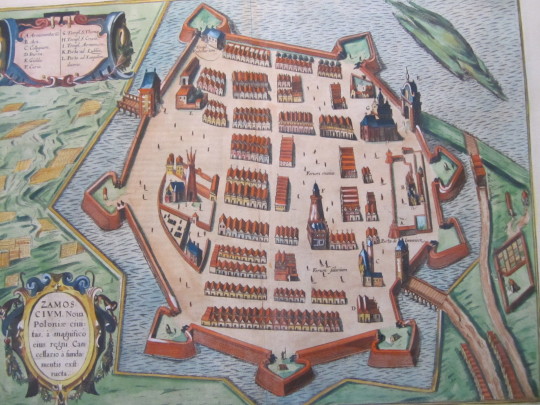
This map of Zamość has been invaluable in building this block map of the city. It comes from much closer to 1630, the approximate date in my setting, and thus shows the city before it was conquered and its fortifications destroyed. Several of the major landmarks present in modern-day Zamość are also absent, as they haven’t been built yet. However, the map also presents a number of challenges. First and most obvious, rather than the now-conventional north=up, this map has south=up. Secondly, several of the buildings are labeled with early-modern Latin, the meanings of which are hard to find directly. Most are obvious - administratii, arx, collegium are not too different from their original meanings. Bursa and gielda, however, proved more challenging to understand. Bursa is Latin and is the root of bursar and purse. Gielda, however, is not Latin. Giełda is Polish, with an archaic meaning of guild and a contemporary meaning of stock exchange, which is also what burza means in Czech and Serbo-Croation (burza in Polish means storm). Each building is near a different city gate and important enough that they make the same list as the cathedral, palace, and college, but neither has been preserved or called out as noteworthy. The giełda makes sense as a guildhall, the headquarters for the (goyish) trade guilds. We’ll explore that more when we get to that block. The bursa/burza, however, poses more of a puzzle. A stock exchange doesn’t make a lot of sense: while Zamość is a locally-important city, it does not compare to a city like Amsterdam (where some contemporaneous stock trading was happening, mostly w/r/t the Dutch East India Company). Even if in actual 17th-century Zamość there was a stock exchange there, one doesn’t make sense in Nowa Polska. The location, right next to the city gate, is disadvantageous for a treasury for the ordynat or a bank. We’ll say the bursa is a building for the collecting and administration of taxes. Taxes in the Polish-Lithuanian Commonwealth were controlled locally, varying from place to place. The bursa’s proximity to the Lublin Gate makes it easy to transport the fees collected at the gate to relative safety. Taxing authorities would not be based at the Zamoyski Palace, nor the Ratusz, and are not in the purview of the trade guilds, so a separate block for it makes a certain amount of sense. While the bursa is the focal point of the block, it is surrounded by more tenements that house middle- and lower-class burghers: older students at the Zamoyski Academy, tax collectors and administrators who work at the bursa, day laborers, and so on. A tavern here serves the locals and also offers lodging to the caravan hands passing through the Lublin Gate. This tavern, due to the diversity of patrons, has the best food of all the taverns in Zamość. Characters who eat here should get some small bonuses to health and healing due to the hearty and high-quality fare - a small reward for exploring the city, albeit one not available to characters that keep kosher. The folk here value good stories and good company but have little patience for blowhards and liars, and they’ve a good sense at sniffing both out. Characters who tell a good yarn, knowing how much to stretch the truth and when to do so, and also are a good audience for others’ tales will find it easy to make friends, and these friends might offer rumors from far-away places, news of incoming and outgoing caravans, or be available for hire.

0 notes